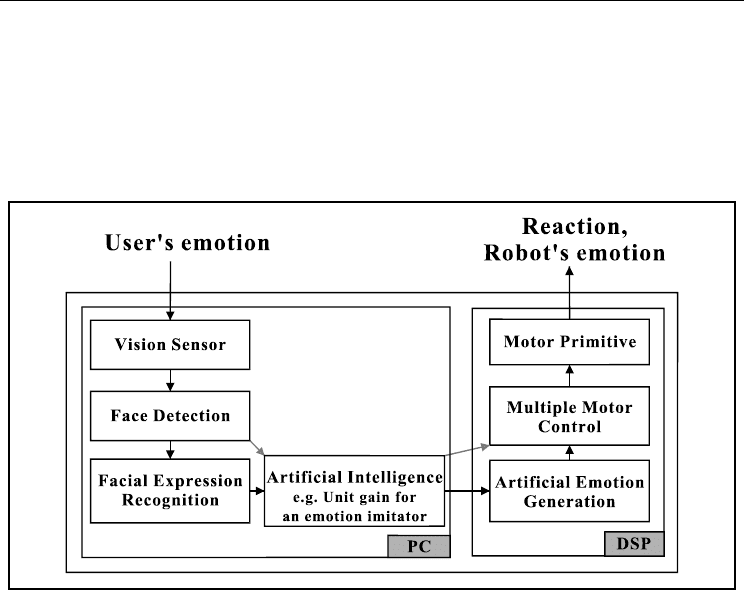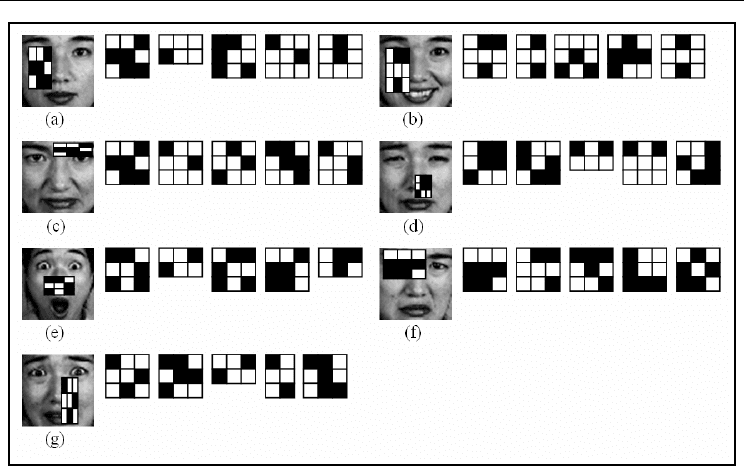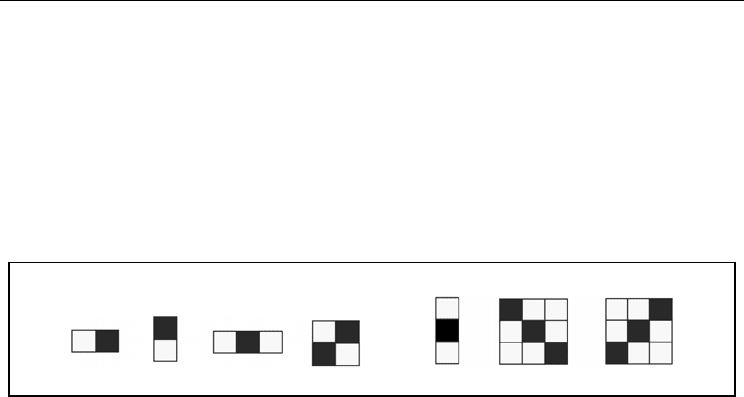Sarkar N. (ed.) Human-Robot Interaction
Подождите немного. Документ загружается.


Can robots replace dogs?
Comparison of temporal patterns in dog-human and robot-human interactions
211
Donath, J., 2004. Artificial pets: Simple behaviors elicit complex attachments. In: M. Bekoff
(Editor): The Encyclopedia of Animal Behaviour, Greenwood Press.
Filiâtre, J.C., Millot, J.L., Montagner, H., 1986. New data on communication behaviour
between the young child and his pet dog. Behavioural Processes, 12: 33-44
Grammer, K., Kruck, K.B., Magnusson, M.S., 1998. The courtship dance: patterns of
nonverbal synchronization in opposite-sex encounters. Journal of Nonverbal
Behavior, 22: 3-29
Kahn, P.H., Friedmann, B., Perez-Granados, D.R., Freier, N.G., 2004. Robotic pets in the lives
of preschool children. CHI 2004. Vienna, Austria, pp 1449-1452
Kahn, P. H., Jr., Friedman, B., & Hagman, J., 2003. Hardware Companions? – What Online
AIBO Discussion Forums Reveal about the Human-Robotic Relationship.
Conference Proceedings of CHI 2003 New York, NY: Association for Computing
Machinery. pp. 273-280
Kaplan, F., Oudeyer, P., Kubinyi, E., Miklósi, Á., 2002. Robotic clicker training Robotics and
Autonomous Systems, 38: 197–206
Kaplan, F., 2001. Artificial Attachment: Will a robot ever pass Ainsworth’s Strange Situation
Test? In: Hashimoto, S. (Ed.), Proceedings of Second IEEE-RAS International
Conference on Humanoid Robots, Humanoids. Institute of Electrical and
Electronics Engineers, Inc., Waseda University, Tokyo, Japan, pp. 99–106.
Kerepesi, A., Jonsson, G.K, Miklósi Á., Topál, J., Csányi, V., Magnusson, M.S., 2005.
Detection of temporal patterns in dog-human interaction. Behavioural Processes,
70(1): 69-79.
Kubinyi, E., Miklósi, Á., Kaplan, F., Gácsi, M., Topál, J., Csányi, V., 2004. Social behaviour of
dogs encountering AIBO, an animal-like robot in a neutral and in a feeding
situation. Behavioural Processes, 65: 231–239
Magnusson, M.S., 1996. Hidden Real-Time patterns in Intra- and Inter-Individual Behavior
Description and Detection. European Journal of Psychological Assessment, 12: 112-
123
Magnusson, M.S., 2000. Discovering hidden time Patterns in Behavior: T-patterns and their
detection. Behavior Research Methods, Instruments & Computers, 32: 93-110
Melson, G.F., Kahn, P., Beck, A., Friedman, B., Roberts, T., 2004. Children’s understanding of
robotic and living dog. IAHAIO People and animals: A timeless relationship,
Glasgow, UK, p 71.
Millot, J.L., Filiâtre, J.C., 1986. The Behavioural Sequences in the Communication System
between the Child and his Pet Dog. Applied Animal Behaviour Science, 16: 383-390
Millot, J.L., Filiatre, J.C., Gagnon, A.C., Eckerlin, A., Montagner, H., 1988. Children and their
pet dogs: how they communicate. Behavioural Processes, 17: 1-15
Naderi, Sz., Miklósi, Á., Dóka A., Csányi, V., 2001. Co-operative interactions between blind
persons and their dogs. Applied Animal Behaviour Sciences, 74(1): 59-80
Nourbakhsh, I.R., Bobenage, J., Grange, S., Lutz, R. Meyer, R., Soto, A., 1999. An affective
mobile robot educator with a full-time job. Artificial Intelligence, 114: 95–124
Pransky, J., 2001. AIBO - the No. 1 selling service robot. Industrial Robot: An International
Journal, 28: 24-26
Rooney, N.J. Bradshaw, J.W.S. Robinson, I.H., 2001. Do dogs respond to play signals given
by humans? Animal Behaviour, 61. 715–722

Human-Robot Interaction
212
Sakaguchi, K, Jonsson, G.K. & Hasegawa, T., 2005. Initial interpersonal attraction between
mixed-sex dyad and movement synchrony. In: L. Anolli, S. Duncan, M. Magnusson
and G. Riva (Editors) The hidden structure of social interaction: From neurons to
culture patterns. IOS Press.
Turner, D.C., Ribi, F.N., Yokoyama, A., 2004. A comparison of children’s behaviour toward
a robotic pet and a similar sized, live dog over time. IAHAIO People and animals:
A timeless relationship, Glasgow, UK, p. 68.
11
A Facial Expression Imitation System for the
Primitive of Intuitive Human-Robot Interaction
Do Hyoung Kim
ಳ
, Kwang Ho An
, Yeon Geol Ryu
and Myung Jin Chung
1
Mobile Communication Division, Samsung Electronics Co.
2
Electrical Engineering Division, Korea Advanced Institute of Science and Technology
Republic of Korea
1. Introduction
The human face has long been considered a representation of humans. According to
observations of cognitive psychology, people unconsciously and frequently recognize and
identify others from their faces. Many researchers have also emphasized the importance of
the human face, e.g., Cicero said “Everything is in a face,” Darwin stated that “The human
face is the most complex and versatile of all species,” and Paul Ekman remarked “The face
makes one’s behavior more predictable and understandable to others and improves
communication” (Kim et al., 2005).
Nobody doubts that the human face is a rich and versatile instrument that serves many
different functions and conveys the human’s motivational state. Facial gestures can
communicate information on their own. Moreover, the face serves several biological
functions; for instance, humans generally close their eyes to protect themselves from a
threatening stimulus, and they close them for longer periods to sleep (Breazeal, 2004)
(Mcneill, 1998) (Ekman et al., 2002).
To interact socially with humans, a robot must be able to do gather information about its
surroundings as well as express its state or emotion, so that humans will believe that the
robot has beliefs, desires, and intentions of its own. Cynthia Breazeal who is one of pioneers
on the natural and intuitive HRI research at MIT mentioned the ideal robotic system like
this: “The ideal of the robotic system is for people to interact, play and teach the robot as
naturally as they would teach an infant or a very young child. Such interactions provide
many different kinds of scaffolding that the robot can potentially use to foster its own
learning. As a prerequisite for human-robot interactions, people need to ascribe precocious
social intelligence to the robot. However, before people treat the robot as a socially aware
being, the robotic system need to convey subjective internal states such as intentions, beliefs,
desires, and feelings” (Breazeal, 2004). As a result, facial expressions are critical in a robotic
system because they encourage people to treat the robot as an object that can convey
internal states, have social intelligence and exploit human-like tendencies.
Our facial expression imitation system is composed of two modules, which are facial
expression recognition and facial expression generation (see Figure 1). The system firstly
detects human’s face in the image. The proposed facial expression recognition algorithm
classifies the obtained face into one of P. Ekman’s basic facial expressions that include

Human-Robot Interaction 214
neutral, happiness, sadness, anger, surprise, disgust and fear (Ekman et al., 2002). From the
result of the recognition, our facial expression imitation system knows user’s facial
expression, and it copies the recognized facial expression through the following procedures:
artificial facial expression generation, multiple motor control, and movements of robot’s
eyelid and mouth.
Figure 1. The whole system block diagram. The image pre-processing, face detecion and
facial expression recognition algorithm run on a personal computer (PC) with a commercial
microprocessor. In addition, the generation of robot’s facial expression and motor controller
operate in a fixed point digital signal processor (DSP)
For the facial expression recognition, we introduced new types of rectangle features that can
distinguish facial expressions efficiently with consideration of more complicated relative
distribution of facial image intensities. In order to find the rectangle features that have the
highest recognition rate, we firstly selected the efficient rectangle feature types for facial
expression recognition from all possible rectangle feature types in a 3×3 matrix form using
1065 facial expression images based on the JAFFE (Japanese Female Facial Expression)
database. Each rectangle feature type was selected by the AdaBoost algorithm. We then
measured the error rate and chose the top five rectangle feature types that had the least
error rate among the total 316 rectangle feature types for each facial expression.
For the facial expression generation, we have designed our system architectures to meet the
challenges of real-time visual-signal processing and real-time position control of all
actuators with minimal latencies. The motivational and behavioral parts run on a fixed point
DSP and 12 internal position controllers of commercial RC servos. 12 actuators are able to
simultaneously move to the target positions by introducing a bell-shaped velocity control.
The cameras in the eyes are connected to the PC by the IEEE 1394a interface, and all position
commands of actuators are sent from PC.

A Facial Expression Imitation System for the Primitive of Intuitive Human-Robot Interaction 215
2. Contents of the Chapter
This Chapter has attempted to deal with the issues on establishing a facial expression
imitation system for natural and intuitive interactions with humans. Several real-time
cognition abilities were implemented such as face detection, face tracking, and facial
expression recognition. Moreover, a robotic system with facial components is developed,
which is able to imitate human’s facial expressions.
As briefly mentioned above, two major issues will be dealt with in this Chapter; one is the
facial expression recognition and the other is the facial expression generation. In the
recognition part, the following contents will be included.
• The state-of-the-art for automatically recognizing facial expressions of human being.
• Issues for the facial expression recognition in the real-time sense.
• The proposed recognition approach.
In order to recognize human’s facial expressions, we suggested a method of recognizing
facial expressions through the use of an innovative rectangle feature. Using the AdaBoost
algorithm, an expanded version of the process with the Viola and Jones’ rectangle feature
types has been suggested. We dealt with 7 facial expressions: neutral, happiness, anger,
sadness, surprise, disgust, and fear. Real-time performance can be achieved by using the
previously trained strong classifier composed by a set of efficient weak classifiers.
In the generation part, the following contents will be included.
• The state-of-the-art for facial robots.
• Issues for designing and developing facial robots; e.g. the mechanics, the system
architecture, and the control scheme.
• Issues for image processing and visual tracking.
• Introduction of the developed facial robot and the generation method of facial
expressions.
In addition, several experiments show the validity of the developed system. Finally, some
conclusions and further works are presented.
3. Facial Expression Recognition
To date, many approaches have been proposed in the facial expression recognition field.
According to which factor is considered more important, there are many categorizations
(Pantic & Rothkrantz, 2000) (Fasel & Luettin, 2003). Based on facial expression feature
extraction, we can classify previous approaches as model-based methods or image-based
methods.
As a representative model-based method, Essa and Pentland fitted a 3D mesh model of face
geometry to a 2D face image and classified five facial expressions using the peak value of
facial muscle movement (Essa & Pentland, 1997). Lanitis et al. used Active Appearance
Models (AAM) to interpret the face and Huang and Huang used a gradient-based method to
classify face shape using a Point Distribution Model (PDM) (Lanitis et al., 1997) ( Huang &
Huang, 1997). Zhang et al. fitted the face with sparsely distributed fiducial feature points and
distinguished facial expressions (Zhang et al., 1998). Generally, these model-based methods
are robust to occlusions. However they are inadequate for a real-time system because they
require much time to fit the model to the face image and need high resolution input images to
analyze facial expressions.

Human-Robot Interaction 216
Among the image-based methods, Lisetti and Rumelhart used the whole face as a feature and
Fellenz et al. used Gabor wavelet filtered whole faces (Lisetti & Rumelhart, 1998) (Fellenz et
al., 1999). Padgett and Cottrell extracted facial expressions from windows placed around the
eyes and mouth and analyzed them using Principle Components Analysis (PCA) (Padgett &
Cottrell, 1997). Bartlett distinguished facial expressions using an image intensity profile of the
face and Lien et al. used dense flow with PCA and block based density to classify facial
expressions (Bartlett, 1998) (Lien et al., 1998).
Recently, Viola and Jones constructed a fast face detection system using rectangle features
trained by the AdaBoost algorithm (Viola & Jones, 2001) (Freund & Schapire, 1995). Wang et
al. applied this method to facial expression recognition and distinguished 7 class facial
expressions in real-time (Wang et al., 2004). However, the systems implemented by AdaBoost
used Haar-like rectangle features for face detection or a bit modified rectangle features (Wang
et al., 2004) (Littlewort et al., 2004). More analysis and innovative rectangle features should
be established for facial expression recognition. Because the rectangle features consider a
local region of the face, new rectangle feature types are needed to consider more complicated
relative distribution of facial image intensities for facial expression recognition.
Given 7 facial expressions (neutral, happiness, anger, sadness, surprise, disgust, fear), we
obtained discernable rectangle feature types for each facial expression among all possible
rectangle feature types in 33 matrix form. The rectangle features are selected again from
the facial image database using the AdaBoost algorithm with the above rectangle feature
types, and so improved the recognition rate of a strong classifier and automatically and
spontaneously recognized human facial expressions in real-time.
3.1 Viola and Jones’ Boosting Method; AdaBoost Algorithm
AdaBoost learning algorithm is a simple learning algorithm that selects a set of efficient
weak classifiers from a large number of potential features. Our boosting algorithm is
basically the same as Viola and Jones’ boosting algorithm (Viola & Jones, 2001). From this
procedure, T weak classifiers are constructed and the final strong classifier is a weighted
linear combination of the T weak classifiers.
• Consider sample images (x
1
, y
1
), …, (x
n
, y
n
), where y
i
= 0, 1 for negative and positive
samples, respectively.
• Initialize weights
1,
11
,
22
i
w
ml
=
for y
i
= 0, 1, respectively, where m and l are the number
of negatives and positives, respectively.
• For t = 1, …, T,
1) Normalize the weights so that w
t
is a probability distribution.
,
,
,
1
ti
ti
n
tj
j
w
w
w
=
←
¦
(1)
2) For each feature, j, train a weak classifier h
j
.
()
jijii
i
wh x y
ε
=−
¦
. (2)

A Facial Expression Imitation System for the Primitive of Intuitive Human-Robot Interaction 217
Figure 2. All possible rectangle feature types within up to 3×3 structure size used for
training
(a) (b)
Fig. 3. Examples of overlapped rectangle feature types. (a) The types are independent of size
variation, (b) The types consider unsigned feature value.
3) Choose the classifier h
t
with the lowest error
t
ε
.
4) Update the weights.
1
1, ,
i
e
ti tit
ww
β
−
+
=
, where e
i
= 0 if sample x
i
is classified correctly, e
i
= 1 otherwise.
• The final strong classifier is
11
1,
() 0.5
()
0,
TT
tt t
tt
if h x
Hx
otherwise
αα
==
≥×
=
®
¯
¦¦
,
1
log
t
t
α
β
=
. (3)
3.2 Procedure for Feature Type Extraction
The process of extracting weak classifiers is identical to Viola and Jones method. Using the
selected rectangle feature types, we trained a face training image set and constructed a
strong classifier for each facial expression. Before the procedure of extracting classifiers,
suitable feature types for facial expression recognition are extracted from all possible
rectangle feature types within a 3×3 matrix form as follows.
• Find all possible rectangle feature types within a 3×3 matrix form. (See Figure 2.)
• Among the above rectangle feature types, exclude overlapped feature types.
1. Size variation
Though two rectangle feature types in Fig. 3(a) have different shapes, they are
overlapped when searching a weak classifier because the size of the rectangle
feature can be extended in the x, y directions.
2. Feature value
Fig. 3(b) shows rectangle feature types that have the same feature values and
opposite polarity. Since the AdaBoost algorithm is a two-class classification
method, the two rectangle feature types in Fig. 3(b) have the same function.

Human-Robot Interaction 218
• For p = 1, …, # of facial expression classes,
Consider sample images (x
1
, y
1
), …, (x
n
, y
n
) where y
i
= 1, 0 for the target facial
expression images and the other facial expression images, respectively. Q denotes the
total number of rectangle feature types.
• For
q
= 1, …,Q,
Initialize weights
11
,
22
i
w
ml
=
for y
i
= 1, 0, respectively, where m and l are the number
of the target facial expression images and the other facial expression images.
• For t = 1, …,T,
1. Normalize the weights so that w
t
is a probability distribution.
,
,
,
1
ti
ti
n
tj
j
w
w
w
=
←
¦
2. For each the feature, j, based on
th
q
rectangle feature types, train a weak
classifier h
j
.
()
jijii
i
wh x y
ε
=−
¦
.
3. Choose the classifier h
q,t
with the lowest error
,qt
ε
.
4. Update the weights.
1
1, ,
i
e
ti tit
ww
β
−
+
=
, where e
i
= 0 if sample x
i
is classified correctly, e
i
= 1 otherwise.
5. Calculate
,,pqt
α
as followings:
,
,,
,
log
1
qt
pqt
qt
ε
α
ε
=
−
. (4)
• Sort
,,pqt
α
in high value order for each p and choose rectangle feature types that have
high
,,pqt
α
value.
3.3 Selected Rectangle Features
Fig. 4 shows the rectangular feature types that effectively distinguish the corresponding
facial expressions extracted from the results of boosting algorithm. In this figure, we arrange
the features in order of the least error from left to right. In Fig. 4, the facial image is place in
a position such that the facial expression can be most accurately distinguished. And the best
rectangular feature is overlay to the corresponding facial expression image. As you can see
in Fig. 4, almost all of the features consider the area just above the mouth, cheek and the
white of the eye. This is because we considered the phenomenon that when a person smiles
or becomes frustrated or annoyed, he or she tends to alter the expression of the mouth or
area around the eyes.

A Facial Expression Imitation System for the Primitive of Intuitive Human-Robot Interaction 219
Figure 4. 5 selected rectangle feature types for each facial expression . (a) neutral, (b)
happiness, (c) anger, (d) sadness, (e) surprise, (f) disgust, (g) fear
In Fig. 4(a), 5 feature types that distinguish the ‘neutral’ facial expression from other facial
expressions are shown. As you can see in this figure, they consider the area above mouth,
cheek and the white of the eye. Fig. 4(b) shows five types that characterize the ‘happy’ facial
expression and the rectangular feature with the least error rate. In Fig. 4(b), the features
consider the eye and mouth of the smiling facial expressions. Fig. 4(c) shows the rectangular
feature that most effectively distinguishes the expression of ‘anger’. The angry facial
expression is characterized by a change in the shape of the eyebrows. It has V shape
eyebrows and the area between eyebrows appears wrinkled. In Fig. 4(c), the rectangle
feature that distinguishes the angry face considers both the eyebrows and the area between
eyebrows. Fig. 4(d) shows the rectangular feature that most effectively distinguishes the
expression of ‘sorrow’. According to Ekman’s research, the edge of the lip moves
downwards and the inner part of the eyebrows pull toward each other and move upward
(Ekman et al., 2002). Meanwhile, the skin area under the eyebrows becomes triangular in
shape. However, Fig. 4(d) does not consider these features, because the features that
characterize the facial expression of sorrow are very weak and are not adequate to
distinguish this expression. Therefore, in Fig. 4(d), we present the rectangular feature
obtained by learning that has highest detection rate. Fig. 4(e) presents the best feature that
effectively distinguishes the ‘surprise’ facial expression. There are a number of features that
characterize the expression of surprise. In Fig. 4(e) the good features are placed around the
nose. In general, when surprised he or she opens his or her eyes and mouth. This pulls the
skin under the eyes and around the mouth, making these areas become brighter. Fig. 4(e)
shows the selected feature considers this kind of area precisely. The expression of disgust is
difficult to distinguish, because it varies from person to person and the degree of the
expression is different from one person to another. In particular, it is hard to distinguish this

Human-Robot Interaction 220
expression from the expression of anger. In Fig. 4(f), among the rectangular features
obtained by boosting algorithm, the one that most effectively distinguishes the expression of
‘disgust’ is presented. This rectangular feature considers the wrinkles around the eyes and
nose. Fig. 4(g) presents the rectangular feature to distinguish the ‘fear’ facial expression. The
expression of fear is the hardest to distinguish. Therefore, we have obtained the fear
rectangle feature types through learning. Five rectangular features are shown in Fig. 4(g).
Previously listed rectangle features represent the characters of the facial expressions of
Ekman’s research (Ekman et al., 2002). Above rectangle feature types consider not only more
than two face features but also the character of each emotion.
(a) (b)
Figure 5. Modified rectangular features. In (a), four types of rectangular features which are
proposed by Viola and Jones are shown. Two additional types to focus on diagonal
structures and a type for the vertical structure in the face image are shown in (b)
3.4 Selected Feature Analysis
The previous section shows that 35 types of rectangle features are reasonable for classifying
facial expressions. This section verifies that the selected rectangle feature types yield better
performance than 7 types of rectangle features (four of Viola and Jones (Viola & Jones, 2001)
and three of diagonal rectangle feature types in Fig. 5). At first using 7 rectangle feature
types, we found the discernable rectangle feature types by using facial expression images in
the same manner as that outlined in Section 3.2. Secondly, through application of the best
discernable rectangle features to the same images and comparison of the feature values, we
conduct a qualitative analysis.
Weak Classifier Comparison
To compare the recognition rate of the weak classifiers, Fig. 6(a) shows a rectangle feature
that effectively distinguishes the neutral facial expression among the 7 rectangle feature
types and Fig. 6(b) presents the best discernable feature type among the 35 rectangle feature
types. These are applied to all facial expression images. Each feature value (the intensity
difference between the intensity of the white rectangle and the intensity of the block
rectangle) for each facial expression is indicated in Fig. 7. Fig. 7(a) shows the feature values
in case of Fig. 6(a) and Fig. 7(b) shows the results of Fig. 6(b). The dotted line in Fig. 7 is the
threshold value obtained by using AdaBoost algorithm. As seen in Fig. 7, the method using
7 rectangle feature types doesn’t distinguish exactly between neutral facial expression and
non-neutral expressions. But the method using 35 rectangle feature types can distinguish
between neutral expression and other expressions even if using a weak classifier. However,
because this analysis is only for one weak classifier, it can not be sure that the recognition
rate of the strong classifier is improved. Nevertheless, if each recognition rate of the weak
classifier is improved, we can say that the recognition rate of the strong classifier will be
improved.
